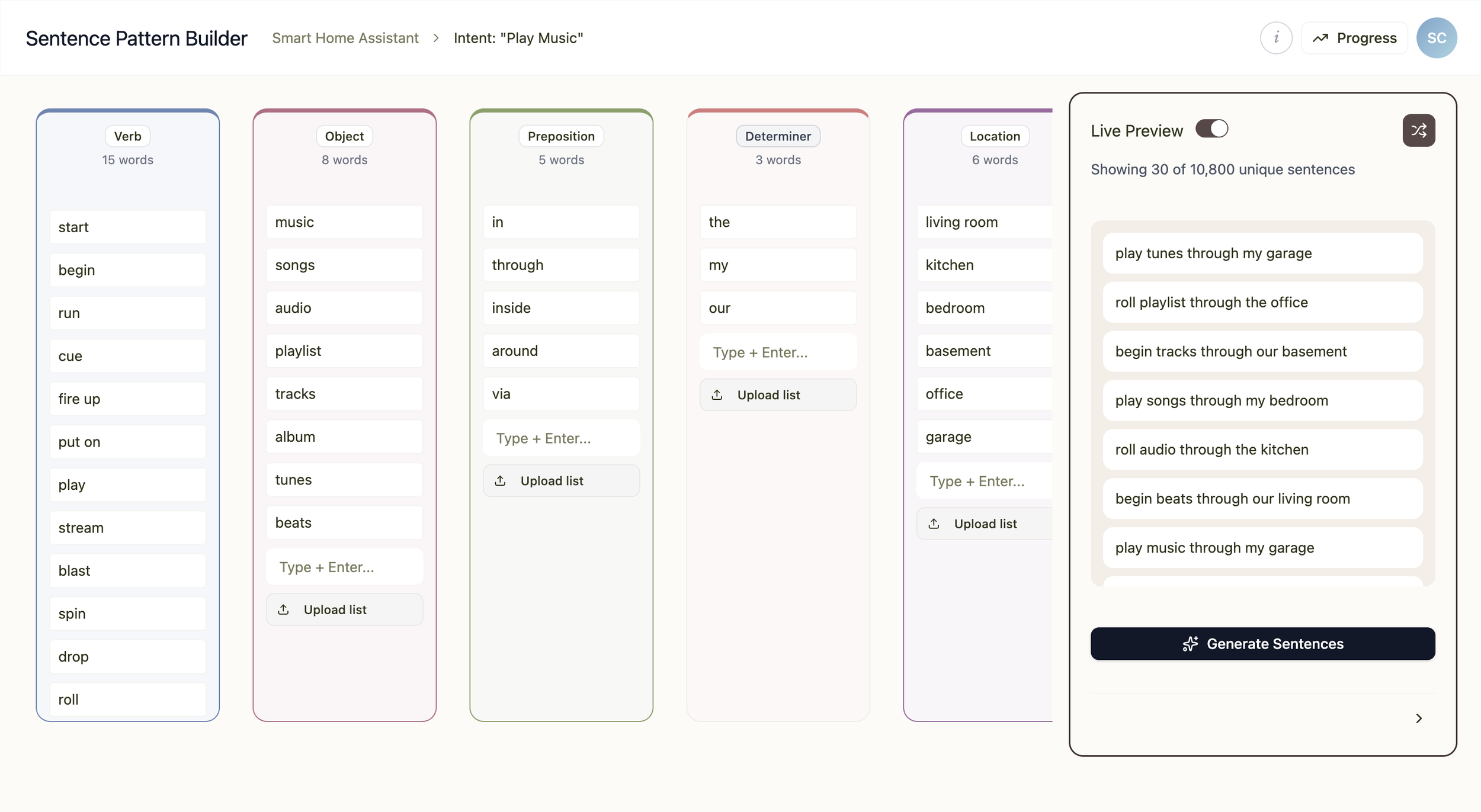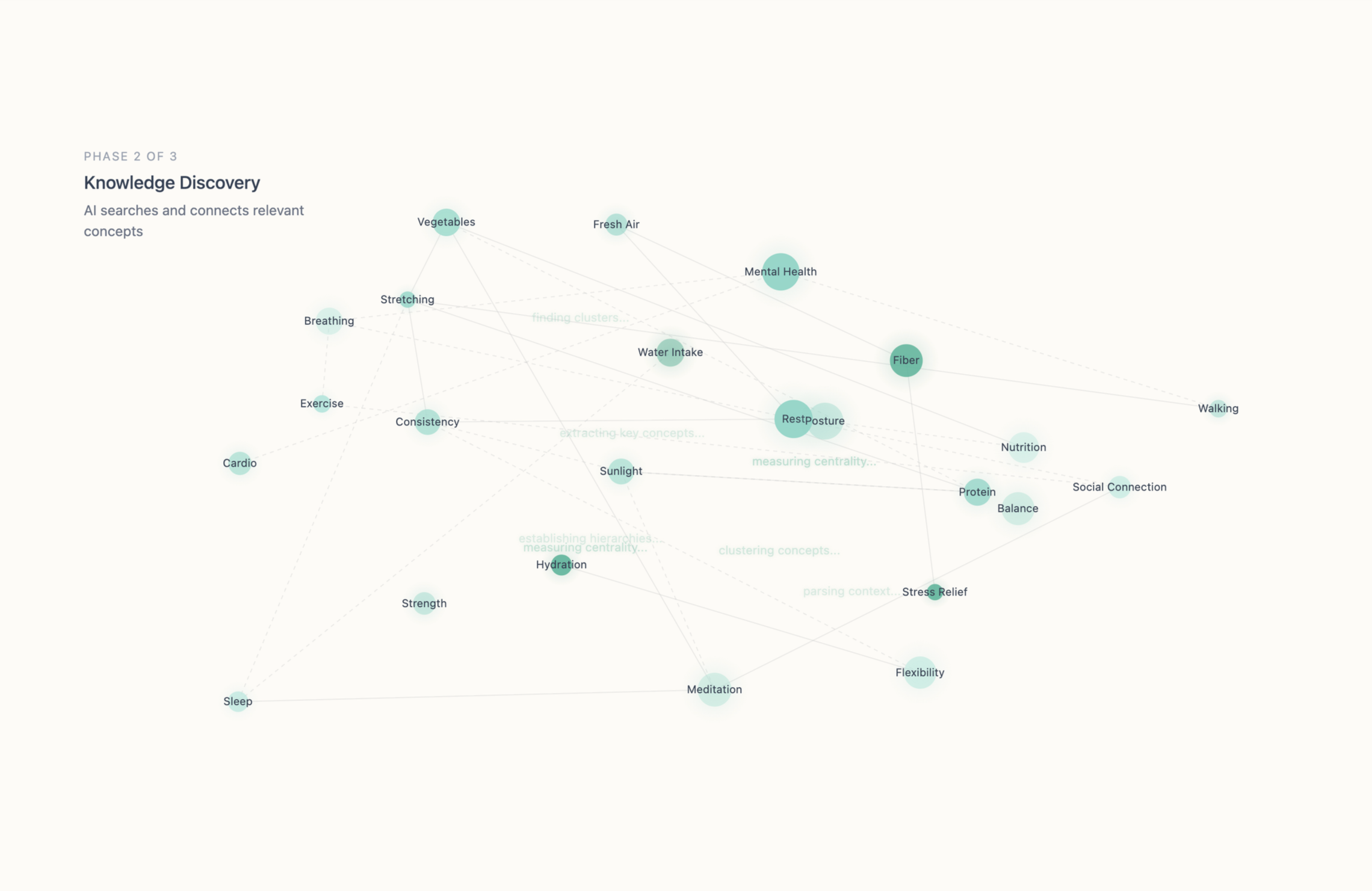Portfolio
Sentence Generator
Designing a scalable system for linguistic data creation
Role: Product & UX Designer
I designed an internal generator that automated the creation of thousands of natural-language utterances for the same intent. By applying syntactic and semantic analysis, I built a scalable system that reduced manual effort, accelerated delivery, and improved the quality and variety of our data outputs.
Question-Type Annotation & Answer Evaluation Workflow
Designing a human-in-the-loop system for classifying questions and refining AI-generated answers
Role: Linguistics SME, Product & UX Designer
I designed a multi-phase annotation workflow that enabled annotators to classify question types, evaluate the quality of AI-generated answers, and refine those answers as needed. By combining linguistic expertise with structured UX patterns, I created a scalable system that improved inter-annotator agreement, reduced QA load, and produced higher-quality data for model evaluation.
PII-Constrained Scenario Generation System
Designing AI-Driven Workflows for Complex Data Requirements
My Role: AI Workflow Architect, Systems Designer
I built a structured, AI-assisted workflow to generate realistic conversation outlines containing natural PII across 7 business domains. By analyzing which PII types were plausible in each domain and creating modular prompt templates, I produced hundreds of high-quality variations and refined them into a final set of ~250 strong conversations. This approach replaced an unscalable manual writing process and enabled us to meet strict dataset requirements under a tight timeline.
Knowledge Network for Researchers
Designing Clarity in AI Systems
Role: Product & UX Designer
Before conversational AI tools existed, our team set out to build a system that could map how ideas relate across texts — creating an AI-generated knowledge network for researchers.
I collaborated with engineers and linguists to translate the system’s complex analysis into a usable, human-centered interface. This case study reflects on the original design, what I learned about bridging machine logic with human understanding, and how I’d approach the experience differently today.
Course Authoring Workbench
Designing for Learning Designers
My Role: Product Designer, Product Manager
The Course Authoring Workbench was an application designed to help course authors and learning designers research, structure, and compose digital courses. Compatible with popular EdTech tools, it integrated AI to enhance the research process and streamline course creation.
I collaborated closely with instructional designers through interviews and feedback sessions to understand their workflows, goals, and pain points. These insights directly informed both the tool’s interface and its documentation, ensuring that the final product aligned with real-world instructional design practices and improved the overall course development experience.
More details coming soon.
UX Problem-Solving Challenge (4-Hour Design Exercise)
A short, timed challenge exploring user needs, system analysis, and clear communication.
Created during a four-hour design challenge, this presentation demonstrates my UX approach to problem-solving—defining user needs, mapping system constraints, and establishing success metrics. It highlights how I translate complex information into actionable insights and communicate solutions with clarity and structure. These skills—research, design thinking, and clear storytelling—reflect my process for creating purposeful, user-centered solutions.


